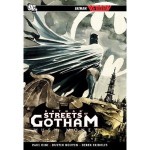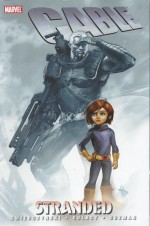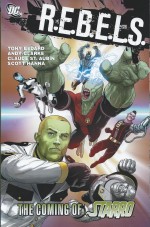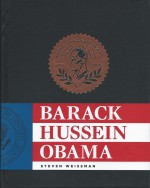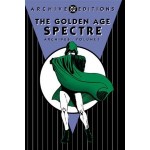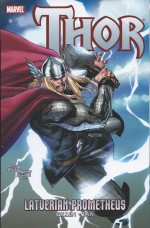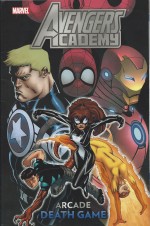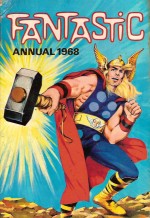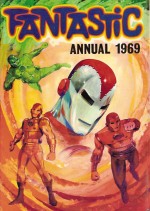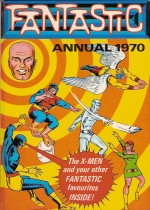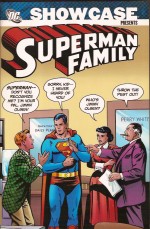
By Otto Binder, Curt Swan, Kurt Schaffenberger & various (DC Comics)
ISBN: 978-1-84576-812-4
During the 1950s and early 1960s in America, being different was a bad thing. Conformity was sacrosanct, even in comicbooks, and everybody and thing was meant to keep to its assigned and intended role.
For the Superman family and cast that meant a highly strictured code of conduct and parameters: Daily Planet Editor Perry White was a stern, shouty elder statesman with a heart of gold, Cub Reporter Jimmy Olsen was a brave and impulsive, unseasoned fool – with a heart of gold – and plucky News-hen Lois Lane was brash, nosy, impetuous and unscrupulous in her obsession to marry Superman although she too was – deep down – another possessor of an Auric aorta.
Yet somehow even with these mandates in place the talented writers and artists assigned to detail their wholesomely uncanny exploits managed to craft tales both beguiling and breathtakingly memorable and usually as funny as they were exciting.
This second cunningly combined chronologically complete compendium collects the affable, all-ages tales from Superman’s Pal Jimmy Olsen #23-34 (September 1957-January 1959), Lois’s second tryout issue from Showcase #10 (September/October 1957) as well as Superman’s Girlfriend Lois Lane #1-7 (March/April 1958-February 1959) and promptly commences with the Man of Steel’s Go-To Guy and the three tales which comprised issue #23 of his solo title, illustrated as almost always by the wonderful Curt Swan & Ray Burnley. ‘Jimmy Olsen’s Two Super-Pals’ was the first of three scripts by the irrepressible Otto Binder and described how our lad gained an other-dimensional Genie as another faithful Super-Friend. Of course with sinister radium bandits plaguing Metropolis there was more to the cosmic companion than met the eye…
This was followed by ‘Jimmy Olsen, the Bearded Boy’ wherein boastful hubris and a magic potion inflicted runaway whiskers on many Daily Planet staff – even ClarkKent – prompting many face-saving secret feats from the identity conscious Man of Tomorrow. As Jimmy’s series progressed, one of the most popular plot-themes (and most fondly remembered and referenced today by most Baby-Boomer fans) was the unlucky lad’s appalling talent for being warped, mutated and physically manipulated by fate, aliens, magic, mad science and even his friends… a fate which frequently befell Lois too although Jimmy got a lot less marriage proposals from aliens, murderers of monsters…
The boy’s bits then concluded with ‘The Adventures of Private Olsen’ wherein the Cub Reporter was assigned to write articles on Army life and – with Superman’s assistance – taught an unscrupulous drill sergeant a much-needed lesson…
When Lois Lane – arguably the oldest supporting character/star in the Superman mythology if not DC universe – finally received her own shot at a solo title, it was very much on the terms of the times. I must shamefacedly admit to a deep, nostalgic affection for her bright and breezy, fantastically fun adventures, but as a free-thinking, (nominally) adult liberal of the 21st century I’m often simultaneously shocked nowadays at the jolly, patronising, patriarchally misogynistic attitudes underpinning too many of the stories.
Yes, I’m fully aware that the series was intended for young readers at a time when “dizzy dames†like Lucille Ball or Doris Day played to the popular American gestalt stereotype of Woman as jealous minx, silly goose, diffident wife and brood-hungry nester, but to ask kids to seriously accept that intelligent, courageous, ambitious, ethical and highly capable females would drop everything they’d worked hard for to lie, cheat, inveigle, manipulate and entrap a man just so that they could cook pot-roast and change super-diapers is just plain crazy and tantamount to child abuse. They’re great, great comics but still…
I’m just saying…
Showcase #10 (September/October 1957) was the second and final try-out appearance – all illustrated by Wayne Boring & Stan Kaye – for Superman’s Girlfriend, Lois Lane and opened with ‘The Jilting of Superman’ by Binder, wherein the Action Ace almost fell for a most ancient ploy when Lois pretended to marry another man to make the alien oaf realise what she meant to him…
‘The Sightless Lois Lane’ written by Jerry Coleman told how a nuclear accident temporarily blinded the journalist, and how her sudden, unexpected recovery almost exposed Clark Kent‘s secret when he callously changed to Superman in front of the “sightless†lass, after which Binder delightfully detailed the contents of ‘The Forbidden Box from Krypton’: a cache of devices dug up by a Smallville archaeologist originally packed by Jor-El and intended to aid the infant Superbaby on Earth. Of course when Lois opened the chest all she saw was a way to become as powerful as the Man of Steel and soon became addicted to being a super-champion in her own right…
The Jaded Journo launched into her own title scant months later, clearly offering exactly what the reading public wanted…
Jimmy Olsen #24 featured another trio of top tales from Binder, Swan & Burnley beginning with ‘The Superman Hall of Trophies’ which found a Kryptonite-paralysed Metropolis Marvel trapped in a museum and rescued by the brave boy reporter, whilst ‘The Gorilla Reporter’ saw the poor sap briefly brain-swapped with a mighty (confused) Great Ape before Superman again had to divert attention from his exposure-threatened alter ego by convincing the world at large that Jimmy was ‘The Luckiest Boy in the World’…
Issue #25 as ever by Binder, Swan & Burnley, featured ‘The Secret of the Superman Dummies’ wherein a trip to a magic show resulted in Jimmy being inescapably handcuffed to the last man in the world Superman dared to approach, ‘The Second Superboy’ saw the poor kid accidentally rocketed to an alien world where he gained incredible abilities – courtesy of resident absent-minded genius Professor Potter – and ‘The Day There Was No Jimmy Olsen’ offered a tantalising hoax and mystery which ended with an unexpected promotion for the pluckily ingenious boy…
He began #26 subjected to inexplicable bouts of deadly mass fluctuations as ‘The World’s ‘Heavyweight’ Champ’ before the newly appointed ‘Jimmy Olsen, Foreign Correspondent’ uncovered a sinister scheme to defraud the Ruritanian Kingdom of Hoxana. Back home however he had to again undergo a well-intentioned con from his best pal after he saw Clark flying and subsequently – inadvertently – himself became ‘The Birdboy of Metropolis’…
Superman’s Girlfriend Lois Lane #1 (March/April #1958) at last arrived sporting three stunning yarns illustrated by sleek, slick Kurt Schaffenberger whose distinctive art-style would quickly become synonymous with the reporter. Everything kicked off with ‘The Bombshell of the Boulevards’ (scripted by Leo Dorfman) wherein she donned a blonde wig to deceitfully secure aHollywood interview and soon provoked a death-duel between rival enflamed suitors. Of course it was only another scheme by Superman and Jimmy to teach her a lesson in journalistic ethics. Good thing reporters are so much less unscrupulous these days…
During this Silver Age period with Superman a solid gold sensation of the newly ascendant television phenomenon, many stories were draped in the wholesome trappings of Tinseltown – even more so than most of celebrity-obsessed America. It didn’t hurt that editor Whitney Ellsworth was a part-time screenwriter, script editor and producer as well as National DC’sHollywood point man.
Otto Binder then reunited with his old Captain Marvel collaborator for ‘Lois Lane, Super-Chef’ as Lois disastrously tried to master home cooking in her latest scheme to get the Man of Steel to propose, whilst in ‘The Witch of Metropolis’ a science assignment went horrifically awry and transformed her into a wizened old hag every time the sun set…
JO #27 opened with ‘The Boy from Mars’ wherein the reporter got his own lesson in integrity after trying to create a circulation-boosting hoax, and another in the perils of pride and over-confidence after messing up ‘A Date with Miss Metropolis’ before the issue ended with a riotous battle with his own evil duplicate after Professor Potter accidentally created ‘The Outlaw Jimmy Olsen’: all courtesy of Binder, Swan & Burnley.
Ever so slowly a more mature tone was developing in the Cub’s adventures. In #28’s ‘The Spendthrift and the Miser’ an alien gift from Superman caused wildly manic mood swings whilst an accidental time-trip impossibly revealed that Jimmy was destined to become ‘The Boy who Killed Superman’ whilst in ‘The Human Skyscraper’ another botched Potter product enlarged the kid to monumental, city-endangering size.
In the second Lois Lanecomicbook she was apparently appalled to uncover ‘Superman’s Secret Sweetheart’ (uncredited here but possibly Bill Finger?), but was in fact on her very best mettle helping a bullied college girl fight back against her mean sorority sisters, after which Binder recounted how Tinseltown improbably called and the reporter became – eventually – an extremely high maintenance actress in ‘Lois Lane in Hollywood’…
‘Superman’s Forbidden Room’ then closed proceedings with a cruel hoax playing on her well-publicised infatuation, but this time it wasn’t the Man of Tomorrow doing the fooling and the stakes had never been higher in a moody thriller illustrated by Boring & Kaye and probably written by Jerry Coleman.
In Jimmy Olsen #29 the usually adept reporter hit a monumental writer’s block whilst working on a novel, but ‘The Superman Book that Couldn’t be Finished’ eventually was – with a little hands-on Kryptonian help – whilst in ‘Jimmy Olsen’s Super-Pet’ the Cub Reporter was adopted by super-hound Krypto in his twilight years – and was instrumental in rejuvenating the Dog of Steel for a new generation. ‘The Amazing Spectacles of Doctor X’ then ended the issue with a clever thriller as Jimmy appropriated goggles which could see the future and glimpsed something he wished he hadn’t…
‘The Rainbow Superman’ by Binder & Schaffenberger, opened Lois Lane #3 and saw the News-hen at her very worst as a cosmic accident made the Man of Tomorrow an ambulatory spectrum and she set about trying to see if Clark too glowed, whilst ‘The Man who was Clark Kent’s Double’ (scripted by Coleman, as was the final tale here) broke her heart after she again proved too nosy for her own good. ‘Lois Lane and the Babe of Steel’ then gave her a terrifying glimpse of her dreams come true when Superman traded temporal places with his toddler self and caused all manner of problems for the capable bachelorette…
In JO #30 ‘The Son of Superman’, Binder, Swan & Burnley jerked our tears when an attempt by the Kryptonian to adopt the reporter went tragically wrong after which they proved equally adept at creating mystery and tension as criminals schemed to destroy Jimmy by making him ‘The Cub who Cried Wolf’. ‘Superman’s Greatest Enemy’ – with Dick Sprang standing in for Curt Swan – then revealed how the naïve lad fell for a crook’s scam but had enough smarts to turn the tables…
Binder & Schaffenberger opened LL #4 with a well-meaning Jimmy using hypnotism to get Clark to propose to Lois, utterly unaware who he was actually using those gimmicks on, catastrophically leading to ‘The Super-Courtship of Lois Lane’…
Times have changed, but when Coleman scripted ‘Lois Lane, Working Girl’ he was simply referring to her being challenged to undertake a job in manual labour, so shame on you. Alvin Schwartz then crafted a canny conundrum in ‘Annie Oakley Gets her (Super)man’ for Boring & Kaye to illustrate, as a riding accident out West caused Lois to believe she was the legendary cowgirl sharpshooter whilst hunting some very nasty gangsters with very real guns…
Jimmy Olsen #31 highlighted the now mythic tale of ‘The E-L-A-S-T-I-C Lad’ (Binder, Swan & Burnley) wherein Superman was ultimately responsible for the reporter gaining stretching powers after leaving a chest of alien artefacts with the nosy, accident-prone kid, whilst in ‘The Mad Hatter of Metropolis’ the power of suggestion convinced the kid that he could imitate the feats of famous folks simply by donning their characteristic chapeaus before ‘The Boy who Hoaxed Superman’ saw the lad attempt to get a pay raise by pretending to leave for the future. It didn’t work, and everybody seemed to prefer the replacement Perry hired who was, of course, Jimmy in disguise…
In #32 Professor Potter’s latest chemical concoction made Jimmy look like Pinocchio but did give him ‘The Super Nose for News’ whilst an uncanny concatenation of crazy circumstances turned the sensibly staid Man of Tomorrow into ‘The Rock ‘n’ Roll Superman’ every time the reporter masquerading as a pop star twanged his old guitar, and ‘The Jimmy Olsen from Jupiter’ (by Alvin Schwartz) revealed how aliens mutated the Cub Reporter into one of their scaly selves, complete with extremely useful mind-reading abilities, much to Superman’s chagrin…
‘Superman’s Greatest Sacrifice’ by Robert Bernstein & Schaffenberger led in Lois Lane #5, as the journalist met her millionaire double and seemingly lost her beloved Metropolis Marvel to her, whilst in ‘The Girl of 100 Costumes’ the canny lass tried to use a myriad of new looks to catch his attention, in an uncredited story drawn by Al Plastino. It was back to silly usual in Binder & Schaffenberger’s ‘The Fattest Girl in Metropolis’;  a plant growth ray accidentally super-sized the vain but valiant reporter. Imagine her reaction when she found out that Superman had deliberately expanded her dimensions… for good and solid reasons, of course…
Binder, Swan & Burnley were in sparkling form in JO #33, starting with ‘Legends that Came to Life’, wherein a nuclear accident animated the strangest foes from fairytales and only Jimmy, not his mighty mentor, could save the day, whilst in ‘The Lady-Killer from Metropolis’ a classic case of boyish arrogance and girlish gossip led to the boy reporter briefly becoming the sexiest thing in Hollywood. The horror and hilarity was capped with ‘The Human Flame-Thrower!’ as Potter’s latest experiment caused Jimmy the worst case of high-octane halitosis in history…
Coleman, Boring & Kaye opened LL #6 with ‘The Amazing Superman Junior’ as yet another attempt to teach Lois a lesson backfired on the pompous Man of Steel and she brought in a mysterious kid to show the Kryptonian what it felt like…
This was followed by a brace of tales by Bill Finger & Schaffenberger, starting with ‘Lois Lane… Convict’ which saw seemingly saw the reporter take a bribe from gangster Baldy Pate and pay a terrible price, whilst in ‘Lieutenant Lois Lane, U.S. Army’ she and Clark joined the military for a story only to have the – temporary – rank turn her into a man-hating bully. Surely some mistake, no…?
‘Superman’s Pal of Steel’ by Binder, Swan & Burnley, opened the last Jimmy Olsen issue in this marvellous monochrome collection as another secret identity-preserving scheme took a bizarre turn after the boy reporter genuinely gained an incredible power. Alvin Schwartz then wrote ‘The Underworld Journal’ which saw the kid inherit his own newspaper and swiftly go off the journalistic rails before Potter’s newest invention turned Jimmy’s clunky old kit into ‘The Most Amazing Camera in the World’ (Binder) – and a deadly danger to Superman’s greatest secret…
Superman’s Girlfriend Lois Lane #7 closes out this volume with three more mixed-message masterpieces beginning with ‘Lois Lane’s Kiss of Death’ (by Bernstein & Schaffenberger), wherein a canny conman tried to fool the reporter into botching her biggest crime exposé. Schwartz then had Lois use hypnotism to wash her heroic obsession out of her mind in ‘When Lois Lane Forgot Superman’.
Illustrated by Boring & Kaye, the tale took an unlikely turn when she then turned her passionate, unfulfilled attentions on poor Clark, after which Lana Lang fully entered the Man of Steel’s modern mythology. When Lois took in the destitute, down-at-heel lass who once held the Boy of Steel’s heart, she seemingly allowed her to also become ‘The Girl who Stole Superman’ in a tense and clever tale from Coleman and Schaffenberger…
These spin-off support series were highly popular top-sellers for more than two decades; blending action, adventure, broad, wacky comedy, fantasy and science fiction in the gently addictive manner scripter Binder and artist Schaffenberger had perfected at Fawcett Comics on the magnificent Marvel Family.
As well as containing some of the most delightful episodes of the pre angst-drenched, cosmically catastrophic DC, these fun, thrilling and yes, occasionally deeply moving, all-ages stories also perfectly depict the changing mores and tastes which reshaped comics from the safe 1950s to the seditious, rebellious 1970s, all the while keeping to the prime directive of the industry – “keep them entertained and keep them wanting moreâ€.
I certainly do…
© 1957, 1958, 1959, 2008 DC Comics. All Rights Reserved.
